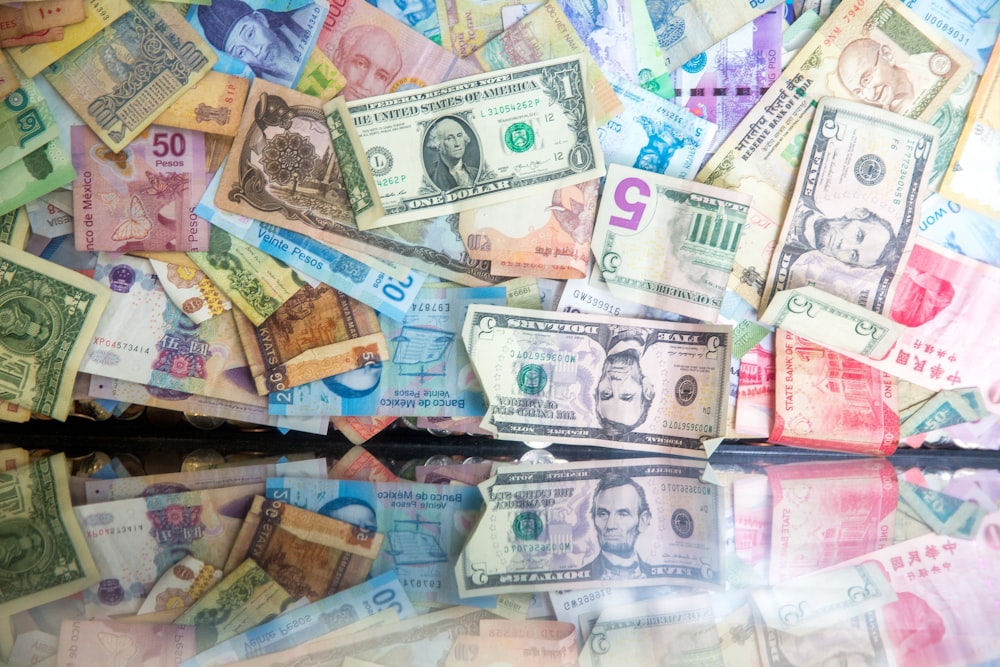

Overview: After the tariff scare on Monday, which saw the US dollar surge, it has pulled back in the last couple of day. But it has returned bid today in what looks like position-squaring ahead of tomorrow US employment report. Despite some Fed officials recognizing that the tariffs may pose a supply shock that has to be taken into account, the odds of a June cut and two before the end of the year increased marginally yesterday, even as coupon yields fell. The greenback is heavier against all the G10 currencies but is straddling unchanged levels against the Japanese yen. Ahead of what widely expected to be a Bank of England rate cut shortly, sterling is the heaviest of the major currencies, off around 0.6%, and nearly 1.25-cents from yesterday’s high. Most emerging market currencies are softer today. Mexico’s central bank may cut by 50 bp today, and the peso is trading with a lower bias. Equities are mostly higher today. In the Asia Pacific region, the large bourses, led by China and Hong Kong rose. India is an exception, and the market is nursing a small loss. The central bank is expected to cut rate first thing tomorrow to begin an easing cycle. The Stoxx 600 in Europe is up around 0.8%, which if sustained, would be the largest gain in three weeks. US index futures are slightly firmer. European benchmark 10-year rates are mostly little changed. The 10-year UK Gilt yield is off 1.5 bp, the most in the region. The 10-year US, which fell to a new low since mid-December near 4.40% yesterday is near 4.44% now. The firmer dollar and rates are conducive for consolidation in gold after setting a record high slightly above $2882 yesterday. March WTI is firm at the lower-end of yesterday’s range (~$71-$73), which itself was within Tuesday’s range (~$70.70-$73.35). USD: The Dollar Index returned to its lowest level since last month’s low was set slightly below 107.00 on January 27 when it looked like the tariffs would be postponed. However, in the topsy-turvy world of Washington, if the tariffs looked inevitable, the Dollar Index had spiked to almost 109.90 at the start of the week. The postponement has spurred a sharp dollar retreat, but it has come back bid today. The Dollar Index has edged back slightly above yesterday’s high. US rates are also firmer. Ahead of tomorrow’s US jobs report, the Dollar Index may have potential toward 108.25-50. Today’s Q4 productivity and unit labor costs are key metrics for the economy but not necessarily for the markets in the short-term. They are not observed directly but are interpolated from the GDP report. Bottom line is unit labor costs likely accelerated amid weaker productivity gains. Challenge job cuts and the weekly jobs claims are overshadowed by tomorrow’s national report and annual benchmark revisions of the establishment survey. EURO: The euro recouped the ground lost amid the US tariff drama rising briefly yesterday above last Friday’s high (~ $1.0440). Monday’s low was near $1.0140. The market has turned cautious ahead of tomorrow’s US employment report, and the euro has pulled back to almost $1.0355 today. This was before the softer than expected December retail sales (-0.2% vs. median forecast for a 0.1% decline, and November’s gain of 0.1% was revised to flat. There is little doubt in the market’s collective judgment that the ECB will like cut rates by at least 50 bp before the Fed cuts again. Initial support may be found in the $1.0300-25 area. CNY: The US dollar’s pullback since Monday’s high has been reflected in its performance against the offshore yuan. The greenback peaked at the start of the week near CNH7.3735. It fell slightly through CNH7.27 yesterday and is consolidating, slightly higher today. The dollar approached CNH7.30 today, around where the five and 20-day moving averages converge. Despite the 10% US tariff and Beijing’s retaliatory measures, the PBOC does not appear to have changed tactics or strategy. It will not depreciate the yuan to offset the tariffs. The PBOC kept its dollar reference rate little changed from where it was before the Lunar New Year holiday. Its last fix before the holiday was CNH7.1698. Yesterday’s fix was at CNY7.1693, and today’s was at CNY7.1691. The greenback is allowed to trade 2% on either side fix. JPY: Falling US rates, broad dollar weakness, stronger Japanese wage data saw the dollar settle below its 200-day moving average against the yen since mid-December yesterday, setting a low near JPY152.10. Follow-through selling today, aided by hawkish BOJ comments saw the dollar ease to almost JPY151.80. Firmer US rates and a general dollar recovery helped the greenback recover to almost JPY153 by early European turnover where offers were being found. The lower Bollinger Band is near JPY152.70. The US 10-year yield recorded a marginal low since December 18, near 4.40% yesterday and is now around 4.44% now. Japan reports December household spending tomorrow. The year-over-year rate is expected to by around 0.5%, the first such gain since last July, and the first positive reading in December since 2018. In December 2023, it has fallen 2.5% year-over-year.GBP: The market is confident that the Bank of England will cut the base rate by a quarter-point today. There may be a dissent, encouraged by yesterday’s news: Inside the final PMI reading was the fastest increase in service prices in 13 months. A quarter of the surveyed service firms lifted prices last month and more than a third said cuts had gone up. Wage growth is still running over 5%. The Labour government announced an increase in national insurance and a minimum wage increase (effective April 1). Still, the majority will support a cut and forward guidance that suggest the easing cycle is not over. The disappointing construction PMI (48.1 from 53.3), the first sub-50 reading since last February, adds to the expectation. The swaps market has the next cut nearly fully discounted for the May 8 meeting. The UK has local elections on May 1. Sterling rose to $1.2550 yesterday, its best level since last month’s high was set (January 7, ~$1.2575) and met the (61.8%) retracement of the losses since the December 6 high, the last time sterling traded above $1.28. Sterling has come back offered today. It has tested the upper band of support seen in the $1.2380-$1.2400 area. Option-related sales may have added to the pressure. Notable options expiration today at $1.2455 (~GBP1.4 bln) and at $1.2550 (GBP1.0 bln). CAD: The recovery of the Canadian dollar from the sharp sell-off when US tariffs looked inevitable overshadowed news that Canada’s goods trade surplus in December was smaller than expected (C$0.7 bln vs C$1.02 bln), the November deficit was larger (C$1 bln vs C$0.32 bln) and January composite PMI remained below the boom/bust level for the second consecutive month. Interest rate differentials stabilized yesterday, and the greenback fell to CAD1.4270 yesterday. That is its lowest level since last month’s low was recorded closer to CAD1.4260. With the sharp setback since Monday’s high, the US dollar met the (38.2%) retracement objective of the large rally from the late September low (~CAD1.3420) to Monday’s spike hike (~CAD1.4795). It settled near CAD1.4310 yesterday. The greenback is trading firmer today and reached slightly past CAD1.4365. Resistance may be encountered near CAD1.4400. The IVEY PMI is due today, but it no longer captures the market’s imagination. Instead, caution may be in order ahead of what is expected to be a soft jobs report tomorrow. Overall job growth is expected to slow considerably from the head 90.9k reported in December (that included 57.5k full-time positions) and the unemployment rate is seen ticking up.AUD: After sinking slightly through $0.6090 on Monday, the Australian dollar test the $0.6300 area yesterday. It looks stalled there and has pulled back to the $0.6255 area today. The 20-day moving average is near $0.6240. Australia reported December trade figures today. They seemed to have little impact, though the trade surplus was smaller than expected on weaker exports and stronger imports. The futures market is confident of a quarter-point rate cut to begin the easing cycle on February 18. In Bloomberg’s survey of 25 economists, 23 expect a quarter-point cut, which nearly matches the market pricing.MXN: Economists are more confident than the swaps market that Banxico will cut its overnight cash target rate to 9.50% from 10.0% today. Of the 21 economists who participated in Bloomberg’s survey, one expects steady policy and two expect a quarter-point cut. The swaps market appears to have a quarter-point move fully discounted. The dollar settled a little above MXN20.63 at the end of last week and settled near MXN20.60 yesterday. It is trading quietly in a narrow range (~MXN20.56-MCN20.6540) today. Yesterday’s high near MXN20.71 may offer initial resistance. The Mexican economy is weak, and provided inflation eases further (January CPI is due tomorrow), the market expects 125 bp of cuts over the next six months.More By This Author:Yen Leads Further Unwinding Of The Dollar’s Tariff-Threat Inspired GainsBrinkmanship And TheaterTariffs Roil Markets















